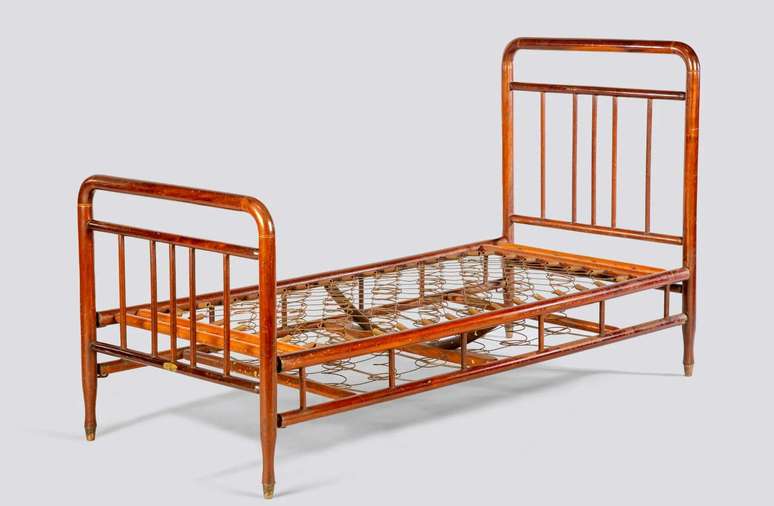There are 164 pieces made between the 16th and 21st centuries […]
This Tuesday 11 June (Tuesday), the Ipiranga Museum inaugurates the temporary exhibition “Sitting, Storing, Sleeping”, which reveals the evolution of different types of furniture over time.
Focusing on the three human actions that give the exhibition its name, as well as the creative solutions adopted at different times, the Ipiranga Museum hosts this exhibition of furniture produced between the 16th and 21st centuries, with pieces created according to the needs of each period.
The 164 pieces chosen, including benches, chairs, sofas and desks, establish a dialogue between the collections of the MCB (Museu da Casa Brasileira), with 118 pieces of furniture, and the Museu Paulista, with 46 pieces, exposing the complementarity of the collections of two institutions state in Sao Paulo.
To facilitate dialogue with the public, the exhibition was organized by types of furniture, allowing a clear comparison between the ways in which the furniture was made, both with artisanal and industrial methods.
Brazilian cultural and social diversity is present in the exhibition, through pieces of the indigenous, Portuguese and Afro-Brazilian heritage, as well as those linked to the various immigrations and migrations that have marked Brazil.
Among the highlights is the Paulistano chair, designed by architect Paulo Mendes da Rocha, from 1957, the famous “pudding chair” made of spiral steel, very thin and flexible, which is “dressed” with a leather covering or canvas.

SIT
This section of the exhibition features popular furniture, chairs and armchairs made by 20th and 21st century designers, and sofa and chair sets from the 18th and 19th centuries.
Among them you can see rocking chairs, sofas, armchairs, benches and sewing chairs. Highlights include pieces designed for work, such as a barber chair and a rare example of a portable dentist chair, as well as indigenous benches and rugs.
SAVE
Various types of furniture used for storing clothes, letters, documents and valuables are presented, such as boxes, baskets, safes, chests of drawers, cabinets, wardrobes, counters, waste bins and desks.
Among the highlights are the paper chest with its secret systems and the saddles used on mules to transport goods and the wardrobe that belonged to the aviator Alberto Santos Dumont.

SLEEP
Furniture is on display that shows different ways of lying and resting, from hammocks of indigenous origin to double beds.
Many of them were offered to museum collections because they belonged to members of the elite, such as the imperial family and nobles who received their titles from emperors, such as the Marquise de Santos, or from political figures of the republican regime.
“Sit, store, sleep” will be displayed in a 900 m² temporary exhibition hall, on the garden level, the new floor of the Ipiranga Museum.
The exhibition is curated by the professors of the Museu Paulista, Maria Aparecida de Menezes Borrego and Paulo César Garcez Marins, and guest Giancarlo Latorraca, architect and former technical director of the Museu da Casa Brasileira.
The assistants Rogério Ricciluca Matiello Félix and Wilton Guerra also collaborated in the curation, for the first time together.
LEARN MORE
“Sit, put away, sleep: Museu da Casa Brasileira and Museu Paulista in dialogue”
Ipiranga Museum (Rua dos Patriotas, 100 – Ipiranga)
From Tuesday to Sunday (including holidays), from 10:00 to 17:00
Long-term exhibition tickets: R$30 (free on Wednesdays and the first Sunday of the month)
The exhibition will remain open until September 29th
Source: Terra
Ben Stock is a lifestyle journalist and author at Gossipify. He writes about topics such as health, wellness, travel, food and home decor. He provides practical advice and inspiration to improve well-being, keeps readers up to date with latest lifestyle news and trends, known for his engaging writing style, in-depth analysis and unique perspectives.






![A Better Life Preview: What’s in store for Tuesday, October 21, 2025 Episode 446 [SPOILERS] A Better Life Preview: What’s in store for Tuesday, October 21, 2025 Episode 446 [SPOILERS]](https://fr.web.img6.acsta.net/img/fe/c7/fec79870332faf9ba9cf244248ec57c8.jpg)


